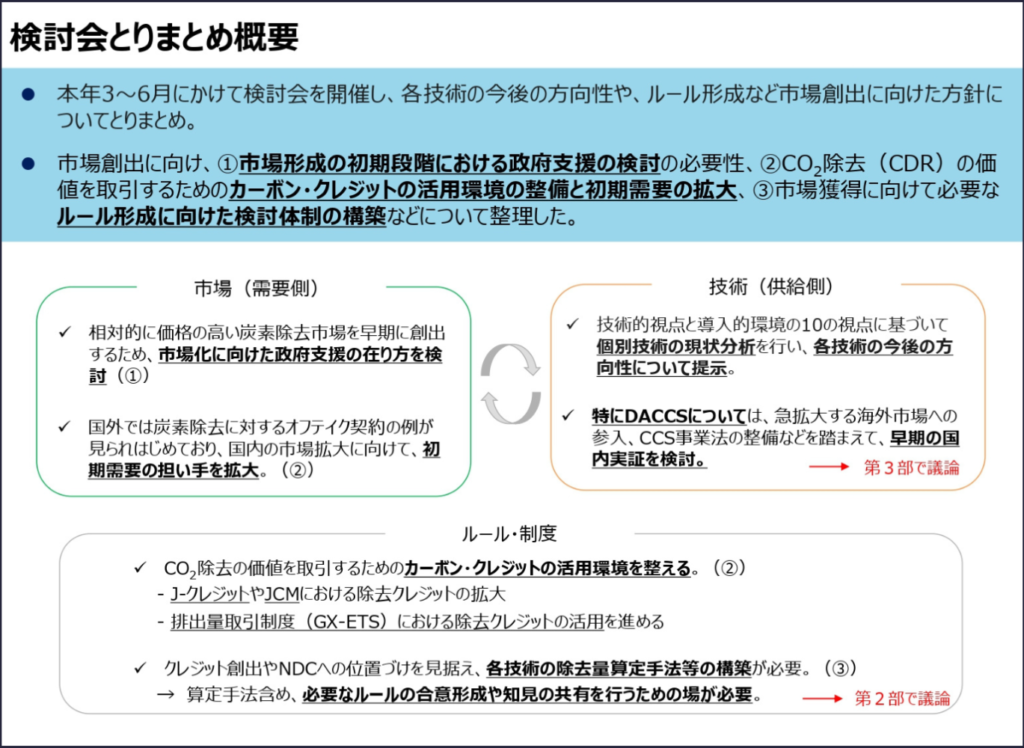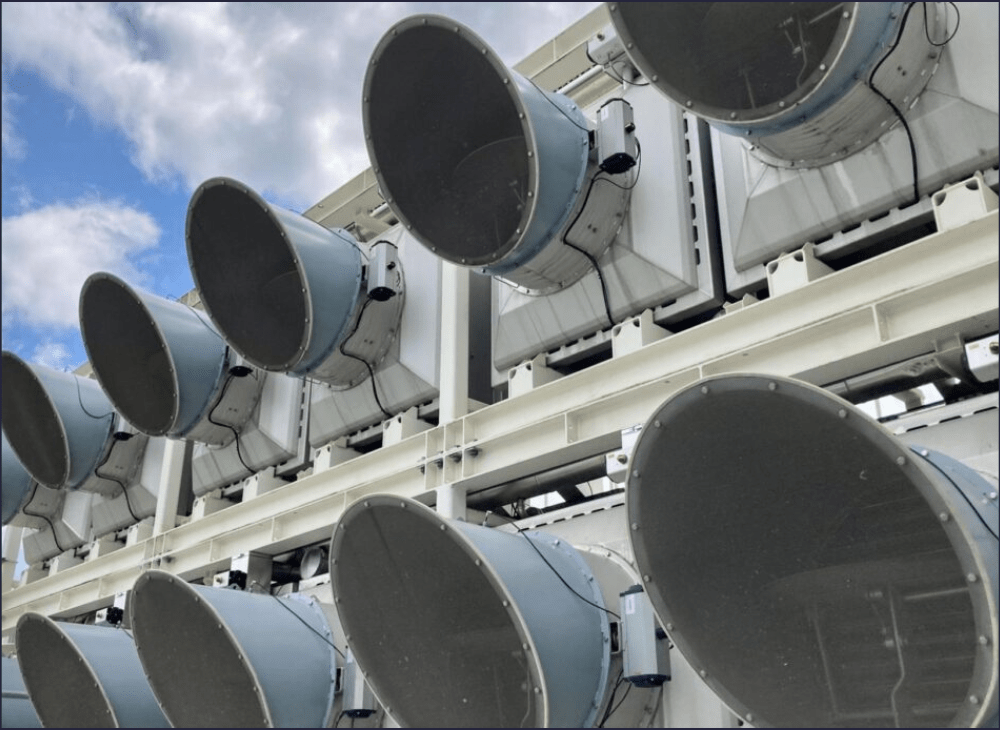METI announced that it will convene an expert working group to consider the creation of a market for direct air capture (DAC) in January next year.

Even as Japan makes progress on clean energy technologies and energy efficiency, there will still be residual CO2 emissions from hard-to-abate sectors. To offset these emissions, Japan plans to capture between 50 million and 240 million tons of CO2 by 2050.
But for a DAC market to function smoothly, a set of regulations, as well as measures for technological innovation and demand creation will be needed. At the very least, these will include:
- Measurement, reporting, and verification (MRV): CDR requires a robust method of measuring how much CO2 is captured, a standard for reporting this measure to stakeholders, and processes for third-party verification.
- Emissions reduction credits: Based on the amount of CO2 they capture, DAC plants will be able to generate emissions reduction credits (also called carbon credits). They can then be purchased by companies interested in reducing atmospheric carbon levels or offsetting carbon emissions from their own operations. These credits are thus crucial for stimulating investment, creating demand, and lowering the cost of DAC technologies.

METI’s DAC working group will discuss these issues, particularly with reference to MRV standards and carbon credits abroad. The working group will also consider how DAC will be integrated with J-credits and units under the Joint Crediting Mechanism (JCM).
Going forward, integrating these credits into a single market will likely be one of the key challenges for the government and market participants to address, given that there will likely be a price gap between carbon emission credits and carbon removal credits.
Convening an expert working group to shape Japan’s DAC market is a welcome development, especially because addressing climate change – and reaching Japan’s target of 46% reduction in greenhouse gas emissions by 2050 compared to 2013 – will require more than large-scale deployment of clean energy technologies.
As the regulatory arrangements for Japan’s DAC market takes shape over the next few years, companies should stay ahead of regulatory developments by familiarizing themselves with existing MRV standards, as well as being cognizant of Japan’s evolving carbon credit market.

Thank you for reading. This article has been taken from our Linkedin Weekly News Digest. If you found it engaging, please consider subscribing to it here for additional content.
